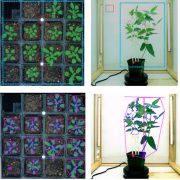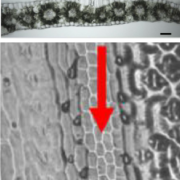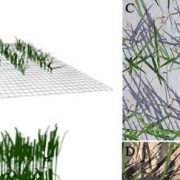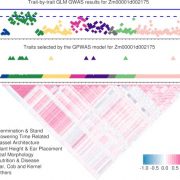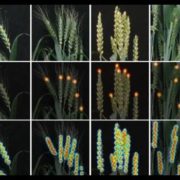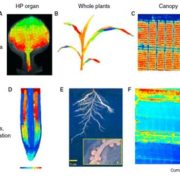Emerging Technologies in Phenomics Sessions at Phenome 2017
Determining the exact phenotypes of a large population of plants, including architectural parameters, metabolic status, and developmental stage, has traditionally required substantial, expensive labor by legions of workers. While technologies for high-throughput genotyping have mushroomed, technologies for high-throughput phenotyping have lagged. The Emerging Technologies for Use in the Field & Controlled Environments sessions of Phenome 2017 profile leading-edge technologies for high-throughput, precision phenotyping and analysis.
Robotics and Remote Sensing
Agricultural robots can decrease the need for manual labor in harvesting (such as picking fruit) and planting. Researchers have begun developing robots to eliminate weeds, and the use of unmanned aerial vehicles (UAVs, or “drones”) has revolutionized large-scale data collection, but comes with its own array of challenges. Navigational systems must incorporate algorithms that can navigate complex terrain and challenging environmental conditions.
In the Robotics and Remote Sensing session of Phenome 2017, Lie Tang from Iowa State University will present “Innovations toward Robotic Plant Phenotyping”, emphasizing critical need for enabling technologies and tools for high-quality and high-throughput plant phenotyping, and showcasing how innovations in automation and robotics can open up new avenues toward that goal. Volkan Isler from the University of Minnesota will explore the use of robotic sensor networks in agricultural applications such as mapping cornfields or estimating the yield of apples from mapping an orchard using UAVs.
One constraint of acquiring data from the air is that these data tend to just show information for the aboveground parts of plants. Josh Peschel from the University of Illinois Urbana-Champaign will discuss his research on high-resolution sensing, 4-dimensional modeling, and visualization of crop sub-canopy environments, to show us what lies beneath the canopy. Edgar Spalding from the University of Wisconsin will discuss how the Phytomorph project aims to make tools for phenotyping more high-throughput and quantitative, possibly tying in his work on auxin and photomorphogenesis.
Imaging
A major challenge in high-throughput phenotyping is accurate, reproducible imaging, particularly of hidden tissues such as developing grains and roots. Chris Topp from the Danforth Center will describe challenges and new developments in imaging the spatial and temporal development of plant architecture in his talk “Field and Lab-Based Phenotyping Approaches to Understand the Genetic Basis of Root Growth and Whole Plant Architecture”. Stefan Gerth from the Fraunhofer Development Center X-ray Technology EZRT will talk about belowground phenotyping of potato tubers, cassava storage roots and maize root architecture.
Capturing the rapid changes in plant metabolism provides a particular challenge. Richard Ferrieri from the University of Missouri will present “Integrated Whole-Plant Fluxomics Aided by Imaging Technologies”, highlighting applications of nuclear imaging (dynamic PET and Radioluminescence Imaging) and mass spectrometric imaging technologies. Xavier Sirault from the Australian Plant Phenomics Facility will share the latest developments and applications of precision and high-throughput phenotyping technologies in Australia and describing new methods to extract trait information from the data collected (i.e. transforming data into information).
Quantitative Field Data
For phenotyping, high-throughput assays are essential to provide the large amounts of information required to characterize phenotypes of crops in depth. This poses a particular challenge for imaging, which produces large amounts of data that can defy quantification. April Agee Carroll, director of Phenomics for the Purdue University College of Agriculture, will describe her work to integrate greenhouse and field phenotyping as part of the Plant Sciences Research and Education Pipeline initiative. Vincent Vadez from ICRISAT in India and Patrick Schnable from Iowa State University will present new work on imaging. Also, Todd Mockler from the Danforth Center will describe his implementation of a high-throughput digital imaging platform for monocots.
The Emerging Technologies for Use in the Field & Controlled Environments concurrent sessions will take place on the afternoon of Saturday, February 11, at Phenome 2017(Tucson, AZ, USA, February 10–14, 2017).




